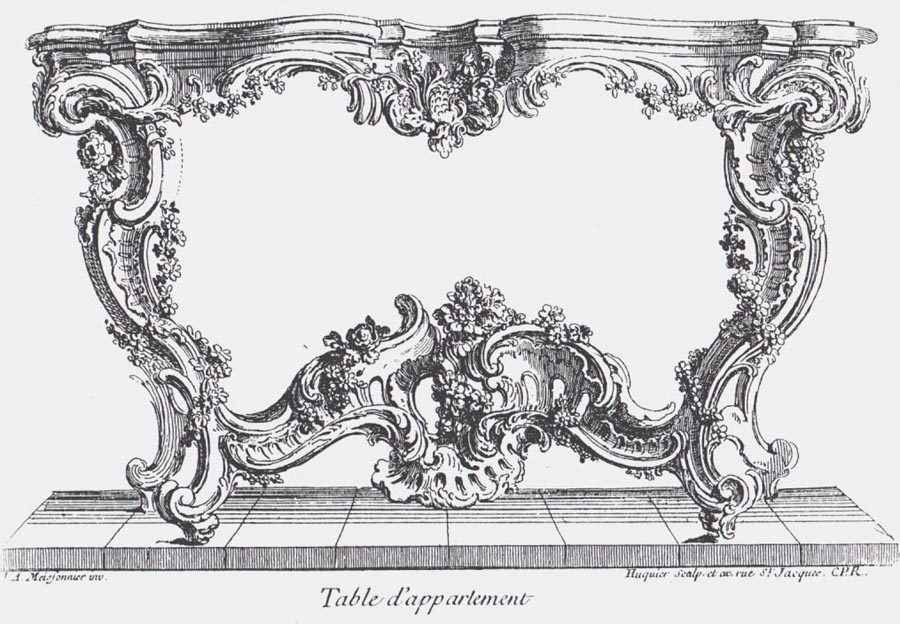Please note that for next week there are TWO readings. The first is by William Morris, "The Revival of Handicraft" -- this is a 'primary source'. The second is by Rafael Cardoso, "Craft Versus Design: Moving Beyond a Tired Dichotomy" -- this is a 'secondary source', that is, one which reflects upon and analysis or responds to a primary source. Please read both for next week's lecture.
Thursday, July 29, 2010
What do you think?
Wednesday, July 28, 2010
Suggested Reading: new!
A list of supplemental readings has been added to this blog under the 'Information' tab-- please take a moment to browse the titles. You may find something of interest. This list will be updated regularly.
Monday, July 26, 2010
Blog Assignment 3: Brief
View the full brief here:
This week, 'construction decorated' or 'decoration constructed'??

This week, 'construction decorated' or 'decoration constructed'??
 |
| http://tordboontje.com/projects/wardrobes/fig-leaf/ |

 |
| Tord Boontje Wardrobe "Fig Leaf" 2008 |
Student Learning Support Services: Special ESOL Session
SLSS is running an ESOL Group for 1st year international or non-English speaking background arch and design students in Trimester Two. The programme aims to further develop the language ability of such students and offer them opportunities to discuss academic issues such as understanding assignment questions. The group meets every Tuesday 11-12 in the Group Study Room in the Architecture and Design Library and will run until the end of the trimester.
For more information email Dr.Xiaodan Gao at xiaodan.gao@vuw.ac.nz
For more information email Dr.Xiaodan Gao at xiaodan.gao@vuw.ac.nz
Saturday, July 24, 2010
Devon D'Aoust: Sensuous Impulse: A Kantian View of Design
Blog assignment 2: from Devon D'Aoust

"Sensuous impulse" is one of two terms coined by Immanuel Kant in his philosophy of aesthetics, specifically relating to the way in which we perceive something. If an object is created with only the sensuous impulse in mind, it is purely aesthetic, created only for beauty. Conversely, if an object is created with only the "formal impulse" in mind, it is purely logical, or functional.
The Rococo movement of the eighteenth century is perhaps the peak of sensuous impulse in design. Its elaborateness was a simple by-product of the wealth of the burgeoning upper class in France, and the prolonged period of peace the country experienced during that time. Items with such elaborate ornamentation and frivolous detail, such as the "table d'appartement" by Juste-Aurèle Meissonier (pictured above), could be easily afforded, and were considered an outwards expression of one's wealth and security. In modern times, however, as humanity realises the world is no longer brimming with the natural resources it was in past years, conservatism and sustainability is the predominant trend in design, appealing to our formal impulse. Therein lies a question, though: in a modern world in which form follows function, is sensuous impulse in design relevant, or even appropriate? The answer is yes, and though sustainability and conservation of natural resources are dominant factors in modern design, the world needs things that appeal to the sensuous impulse. Clothing, for example, is designed primarily with aesthetics in mind, and is a large component of self expression. Beautiful objects keep society happy; functional objects keep society running.
The Rococo movement of the eighteenth century is perhaps the peak of sensuous impulse in design. Its elaborateness was a simple by-product of the wealth of the burgeoning upper class in France, and the prolonged period of peace the country experienced during that time. Items with such elaborate ornamentation and frivolous detail, such as the "table d'appartement" by Juste-Aurèle Meissonier (pictured above), could be easily afforded, and were considered an outwards expression of one's wealth and security. In modern times, however, as humanity realises the world is no longer brimming with the natural resources it was in past years, conservatism and sustainability is the predominant trend in design, appealing to our formal impulse. Therein lies a question, though: in a modern world in which form follows function, is sensuous impulse in design relevant, or even appropriate? The answer is yes, and though sustainability and conservation of natural resources are dominant factors in modern design, the world needs things that appeal to the sensuous impulse. Clothing, for example, is designed primarily with aesthetics in mind, and is a large component of self expression. Beautiful objects keep society happy; functional objects keep society running.
Thursday, July 22, 2010
Revised hand-in time: blog assignments due midnight Friday
To give students in Friday afternoon tutorials time to revise blog assignments following feedback from their tutorial sessions, the blog assignments will now be due AT MIDNIGHT on Fridays (rather than 6pm). Please note this change applies to all streams.
Subscribe to:
Posts (Atom)
